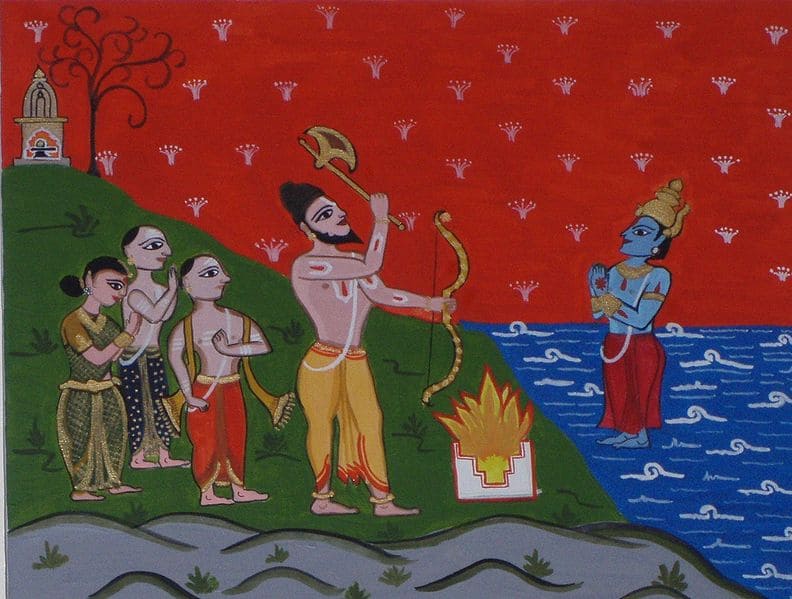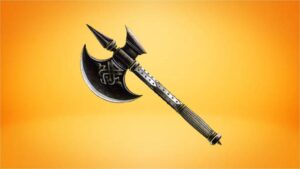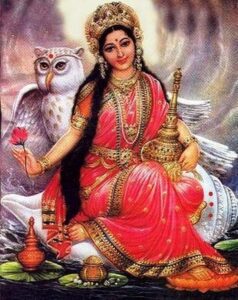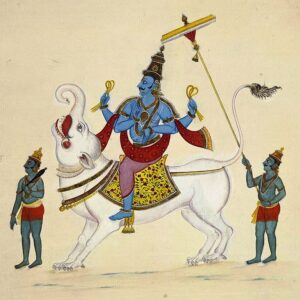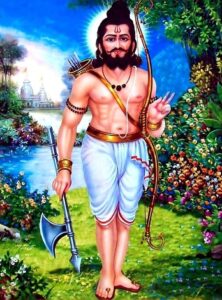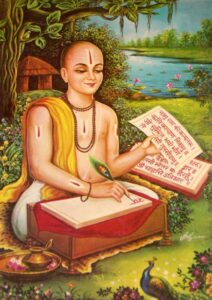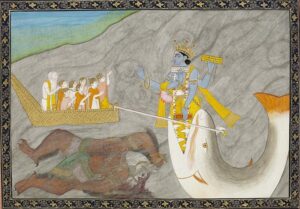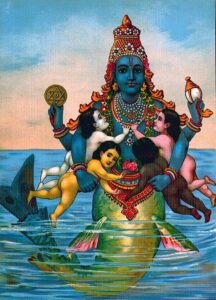This painting shows Lord Parasurama, an avatar of Lord Vishnu, asking Lord Varuna, the God of the waters, to recede so that the land known as Kerala from Kanyakumari to Gokarna for the Brahmins can be formed.
Several myths and legends persist concerning the origin of Kerala. One such myth is that Parasurama, a warrior sage, created it. The Brahminical myth proclaims that Parasurama threw his battle axe into the sea, causing the land of Kerala to rise and be reclaimed from the waters.
The word Parasu means ‘axe’ in Sanskrit; therefore, the name Parasurama means ‘Ram with Axe’. His birth aimed to deliver the world from the arrogant oppression of the ruling caste, the Kshatriyas. He killed all the male Kshatriyas on earth and filled five lakes with their blood.
After destroying the Kshatriya kings, was advised that to save his soul from damnation, he must hand over the lands he had conquered to the Brahmins. He did as they advised and sat in meditation at Gokarna. There, Varuna -the God of the Oceans and Bhumidevi – the Goddess of Earth blessed him. From Gokarna, he reached Kanyakumari and threw his axe northward across the ocean. The place where the axe landed was Kerala. It was 160 katam (an old measure) of land lying between Gokarna and Kanyakumari.
Puranas say that it was Parasuram who planted the 64 Brahmin families in Kerala, whom he brought down from the north to expiate his slaughter of the Kshatriyas. According to the Puranas, Kerala is also known as Parasurama Kshetram, ie., ‘The Land of Parasurama’, as the land was reclaimed from the sea by him.

